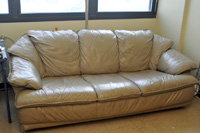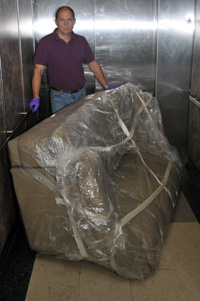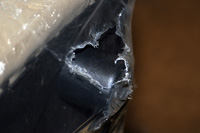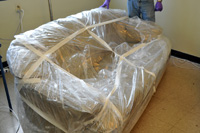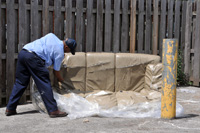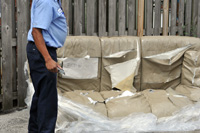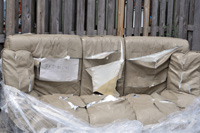
Know The Facts: Bed Bugs
Click here for the most common bed bug questions.
Click here for the most common bed bug questions (this site is in Portuguese).

Videos
Bed Bug Prevention &Control Video - 20 min
Nat Geo Bed Bug Introduction
Bed Bug Biting Signs
Bed Bug Feeding Sequence
Hotel Room Inspection
Avoid Bringing Bed Bugs Home
Bed Bug Dog Detection
Bed Bug Infested Suitcase
Bed Bug Control - Steaming
Bed Bug Control - Spraying
Bed Bug Control - Encasement

Resources
Extension Entomology,Purdue University
Purdue University, Medical Entomology - Bed Bugs
EPA | Controlling Bed Bugs
Bed Bug Product Search Tool
Bed Bug Insecticide application target areas, key ingredients and formulations
Additional Resources
Powerpoint Presentations
Basics
Prevention & Detection
Control
Bed Bug Exhibit
Bed Bug Inspection Game
Armed Forces Technical Guide
Purdue Scientific Publications
Bed Bug Furniture Inspection and Disposal Protocol
Click here to download Furniture Inspection PDF
Purpose:
This is a sample furniture inspection and disposal protocol designed to be used by building managers and landlords to develop their own building specific protocol. Developing a system for inspecting and disposing of potentially infested furniture - in conjunction with resident/staff education - will prevent infested furniture from entering the building or spreading bed bug problems to other units.
Acquired Furniture Policy:
- Purchase or obtain furnishings from a “low risk” reliable source. Do not purchase used beds, and be cautious of disposed furniture and other household items in alleys or along roads.
- Inspect for bed bugs before bringing it into the building:
- Look in all seams, cracks and crevices
- Look in fabric rips and tears
- Turn furniture over to see underside and back
- Remove drawers - inspect the drawer and the drawer cavity
- Using a magnifying glass can be helpful
- If bed bugs or eggs are identified…
- DO NOT purchase or bring the piece into the building, and if possible, inform the owner of your suspicions.
- Refer to the bed bug infested furniture disposal protocol below
- If bed bugs or eggs are identified AND you still want the piece…
- Vacuum, steam clean, wash, or otherwise treat all surfaces of the the infested piece of furniture – concentrate on the areas identified as infested
- Re-inspect the piece to insure that all evidence of bed bug infestation has been eliminated
- Retreat and repeat inspection as necessary
- Consider re-painting or sealing suspect furniture before transporting
- Wrap furniture in plastic for transport into the unit
Furniture Disposal Policy:
How do I properly dispose of bed bug infested furniture?
When bed bug inspections reveal that a bed or other piece of furniture is infested with bed bugs, home owners often panic and seek to immediately discard the furniture.
There are times that furniture should be discarded but certainly not always. Remember that bed bugs can be eliminated from beds or stuffed furniture using control methods mentioned later. In most cases there is no need to throw expensive furniture out.
Having said that, there are situations when a heavily infested piece of furniture might best be simply disposed of. Just how that is done is critical to prevent the spread of bed bugs.
Furniture moving is most often a two man job. When it comes to bed bug infested furniture, this is even more true.
Before you even begin to move the furniture, make a sound plan as to how and where the furniture can be moved easily and safely.
Remove bed bug infested furniture from a home or apartment with ‘containment’ in mind. The goal is as much to prevent the spread of the bugs, as it is to be rid of the furniture. To do this you must ensure that all bugs are contained inside the furniture on the way to the dumpster. This is best done by wrapping the chair or couch in plastic. Drop cloths are inexpensive large sheets of plastic that can be wrapped around the furniture and sealed with tape. Be sure to seal up any openings or tears so that the bugs cannot fall out as the furniture is loaded, tipped and carried down hallway, stairs and through doors.
Once the furniture is successfully removed from the building it is the final responsibility of the owner to ensure that the furniture is not picked up by another and taken into another home or apartment, thereby spreading the bed bug infestation. The best way to assure that this does not occur is to render the furniture unusable. Breaking the wooden framing and slashing the fabric with a utility knife are two effective ways of doing this. Further, ensure that others know that the furniture is infested by marking it as such before you leave it to be discarded.
Written Policy:
Management will design building-specific protocol for disposing of all furniture and other household items. This protocol should include the following:
- Guidance on the treatment of infested items already owned (see Acquired Furniture Policy #4)
- Notification guidelines for disposing of furniture regardless of infestation status:
- Tenants will not always be aware of bed bug infestations
- Tenants may be embarrassed to inform management of infestation
- Disposal guidelines for all furniture including:
- Wrapping for disposal – where appropriate management can provide plastic sheeting or other means of containing potentially infested furniture
- Labeling/treatment especially when infestation has been identified
- Path for furniture to be removed from building
- Location for disposing of items
- Regularly scheduled furniture disposal pick up including dates, times, and locations
- Special pick-up arrangements for infested furniture, e.g., no more than 24 hours after disposal
Education:
Educating residents on proper inspection and disposal of furniture is the key to preventing the spread of bed bugs. Once a protocol is developed, it must be communicated to all residents without exception and periodically repeated. With the proper education, your tenants can become an ally in preventing your building from ever becoming a bed bug haven.
Back to top
